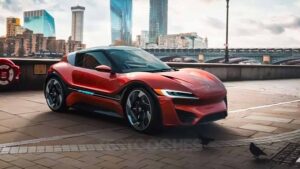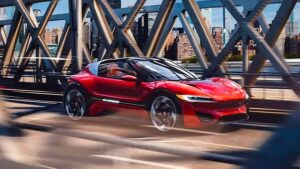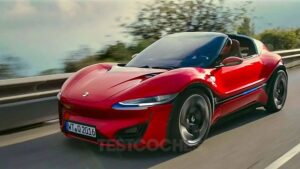
The Swiss company nanoFLOWCELL is behind the development of flow batteries . A technology based on two liquid electrolytes of metallic salts that, through a redox reaction , generate the electrical energy necessary for the electric motor of a vehicle to operate. The company’s data points to an energy density 20 times higher – gravimetric energy density – so that they have already been able to reach 2,000 km of maximum autonomy and with other very promising results.
 La industria del coche eléctrico está trabajando a marchas forzadas por traer las solid-state batteries as soon as possible , because they promise a much higher autonomy than the current lithium batteries based on liquid electrolytes can offer. But this technology also promises less degradation resulting from the formation of dendrites, a lower risk of fire and also a faster charging capacity . However, batteries with solid electrolyte are not the only ones in development and, in fact, this flow battery is capable of exceeding its expected potential . We are talking about up to 2,000 km of autonomy and, along the way, solving many other problems of current batteries.
La industria del coche eléctrico está trabajando a marchas forzadas por traer las solid-state batteries as soon as possible , because they promise a much higher autonomy than the current lithium batteries based on liquid electrolytes can offer. But this technology also promises less degradation resulting from the formation of dendrites, a lower risk of fire and also a faster charging capacity . However, batteries with solid electrolyte are not the only ones in development and, in fact, this flow battery is capable of exceeding its expected potential . We are talking about up to 2,000 km of autonomy and, along the way, solving many other problems of current batteries.
In reality, there is no significant news in the development of this flow battery , which we have been aware of for about ten years , beyond the fact that the company continues to make relatively important technical improvements and, above all, stability and durability tests. The latest news they have reported is the presence of the QUANTiNO twentyfive, its prototype of an electric car with a flow battery , at the Top Marques in Monaco. There, interested parties have been able to see what this unique electric car is like, whose greatest attraction is this innovative battery that promises to reach up to 2,000 km of autonomy.
As I was saying, this unique battery is based on two liquid electrolytes made of metal salts , one positive and one negative, which produces a redox reaction in the exchange and as a result the electrical energy that powers the electric drivetrain of the QUANTiNO twentyfive is generated. It is a non-flammable , harmless system that also offers 20 times more gravimetric energy density than current lithium-ion batteries with liquid electrolytes. And this, obviously, is what explains why such a high autonomy can be achieved in a relatively small car and, in addition, with a contained weight .
 Not only does it solve the limitations of autonomy, but it also charges as quickly as a gasoline or diesel , because only the positive and negative liquid electrolyte tanks have to be filled. Unlike what happens with fuel cell vehicles, powered by hydrogen, it does not require high pressure either when refueling, or when storing or transporting the liquid. By the way, the company explains that it is not toxic either.
Not only does it solve the limitations of autonomy, but it also charges as quickly as a gasoline or diesel , because only the positive and negative liquid electrolyte tanks have to be filled. Unlike what happens with fuel cell vehicles, powered by hydrogen, it does not require high pressure either when refueling, or when storing or transporting the liquid. By the way, the company explains that it is not toxic either.
In recent times they have been working on demonstrating the high reliability of this system. And according to the data they have provided so far, it has been proven that it can work for more than 10,000 hours without significant wear on the pumps or membranes. This, in easier to understand figures, translates into more than 350,000 kilometers on the odometer without significant losses. In fact, the system does not seem to suffer from a progressive loss of autonomy , as has been proven to occur in electric cars. However, it does not seem that there is excessive interest on the part of the major brands.
11/30/2024
